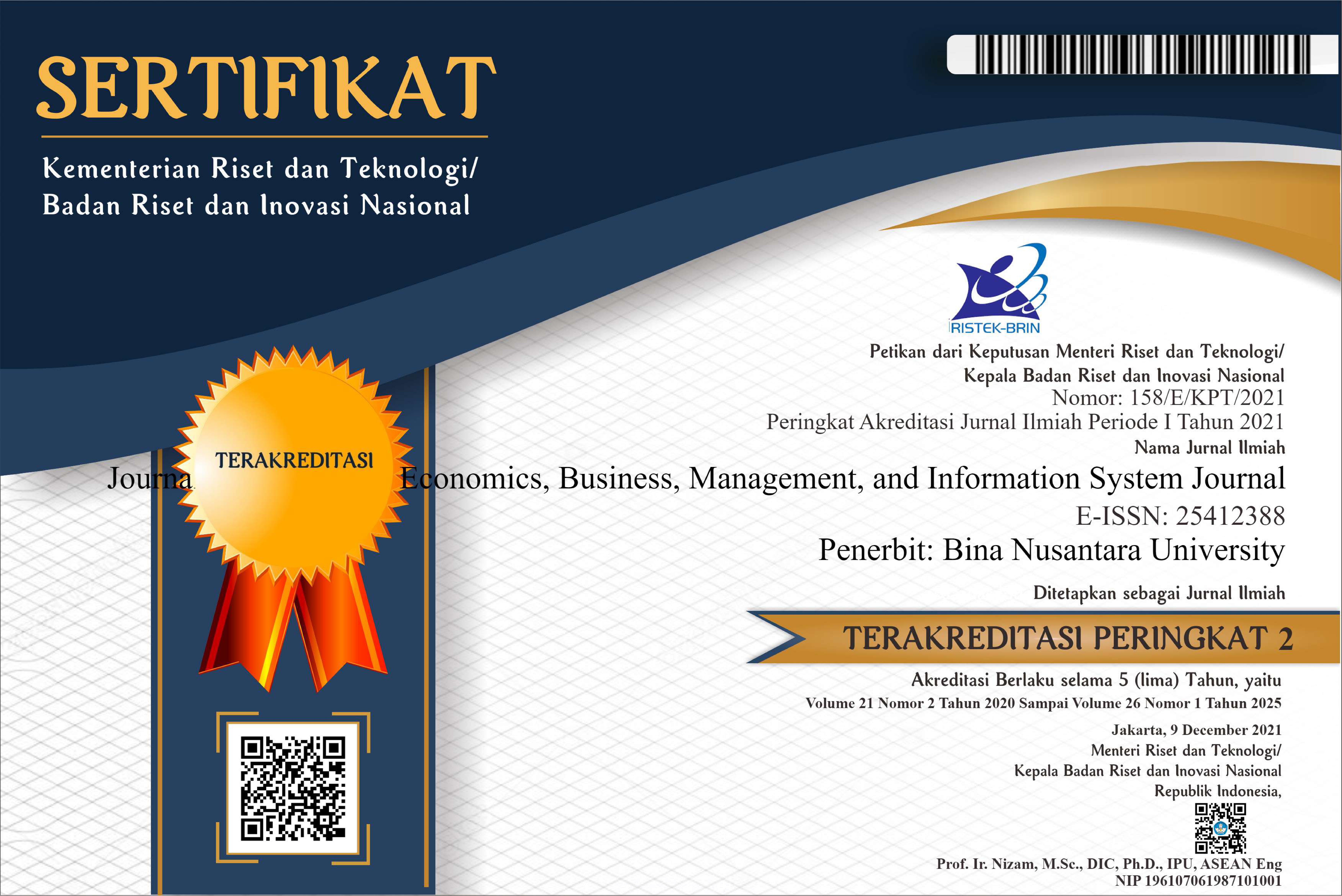Pembiayaan Defisit dengan Utang dan Ketahanan Fiskal di Indonesia
DOI:
https://doi.org/10.21512/tw.v14i2.653Keywords:
deficit, external debt, internal debt, fiscal sustainableAbstract
The focus of this study is to analyze the fiscal sustainability in Indonesia. To achieve these objectives, multiple regression model was constructed by the method of ordinary least squares (OLS). This model modified of the model of Buiter, Cudington, and Din. H.T. Data were collected from various sources such as the World Bank, Asian Development Bank, Bank of Indonesia, the Ministry of Finance of the Republic of Indonesia and the Indonesian Central Bureau of Statistics. The data are in the form of time series from 1980 - 2011. The results indicated that the budget deficit financing via debt (both foreign debt and domestic debt) still maintaining fiscal sustainability. This indication is seen from the change in value of the primary surplus that causes the debt ratio has decreased. Besides debt financing (both foreign debt and domestic debt) does not significantly causes the debt ratio increases.
Plum Analytics
References
Arif, S., Sasono, A. (1987). Modal Asing, Beban Utang Luar Negeri dan Ekonomi Indonesia. Jakarta: UI Press.
Bohn, H. (1998). The behaviour of U.S public debt and deficits. Journal of Economics, 113(3), 949–963.
Buiter, W. H. (1997). Aspects of Fiscal Performance in some Transition Economies under Fund. Supported Programs, IMF.
Chouraqui, J. C., Hagemann, R. P., Sartor, N. (1999). Indicators of Fiscal Policy: A Reexamination. OECD, Working Paper, 78.
Cohen, D. (2000). The HIPC Initiative: True and False Promises. OECD Development Center.
Cuddington, J. T. (1996). Analyzing the Sustainability of Fiscal Deficits in Developing Countries. Washington D.C., USA: University of George Washington.
Dinh, H. T. (1999). Fiscal Solvency and Sustainability in Economic Management. Working Paper World Bank.
Greiner, A., Koeller, U., Semmler, W. (2006). Testing the sustainability of German fiscal policy: evidence for the period 1960–2003. Empirica, 33.
Marks, S. V. (2003). Fiscal Sustainability and Fiscal Solvency: Theory and Recent Experience in Indonesia. Disiapkan untuk Bappenas, Pegasus Consulting.
Rachbini, D. J. (2006). Ekonomi Politik dan Teori Pilihan Publik. Edisi Kedua. Jakarta: Ghalia Indonesia.
Rahayu, A. S. (2010). Pengantar Kebijakan Fiskal. Jakarta: Bumi Aksara.
Roubini, N. (2001). Why Should the Foreign Creditors of Argentina Take a Greater Hit/Hair Cut Than the Domestic Ones. Working Paper Series, NBER.
Wibowo, D. (2003). Optimalisasi Manajemen Utang Luar Negeri Pemerintah. Diakses dari http://www.kau.or.id/articles.php?lng=en&pg=192,
Yuswar, Z. B., Mulyadi, S. (2005). Keuangan Negara dan Analisis Kebijakan Utang Luar Negeri. Jakarta: Penerbit Raja Grafindo Persada.
Downloads
Published
Issue
Section
License
Authors who publish with this journal agree to the following terms:
a. Authors retain copyright and grant the journal right of first publication with the work simultaneously licensed under a Creative Commons Attribution License - Share Alike that allows others to share the work with an acknowledgment of the work's authorship and initial publication in this journal.
b. Authors are able to enter into separate, additional contractual arrangements for the non-exclusive distribution of the journal's published version of the work (e.g., post it to an institutional repository or publish it in a book), with an acknowledgment of its initial publication in this journal.
c. Authors are permitted and encouraged to post their work online (e.g., in institutional repositories or on their website) prior to and during the submission process, as it can lead to productive exchanges, as well as earlier and greater citation of published work.
USER RIGHTS
All articles published Open Access will be immediately and permanently free for everyone to read and download. We are continuously working with our author communities to select the best choice of license options, currently being defined for this journal as follows: Creative Commons Attribution-Share Alike (CC BY-SA)

















